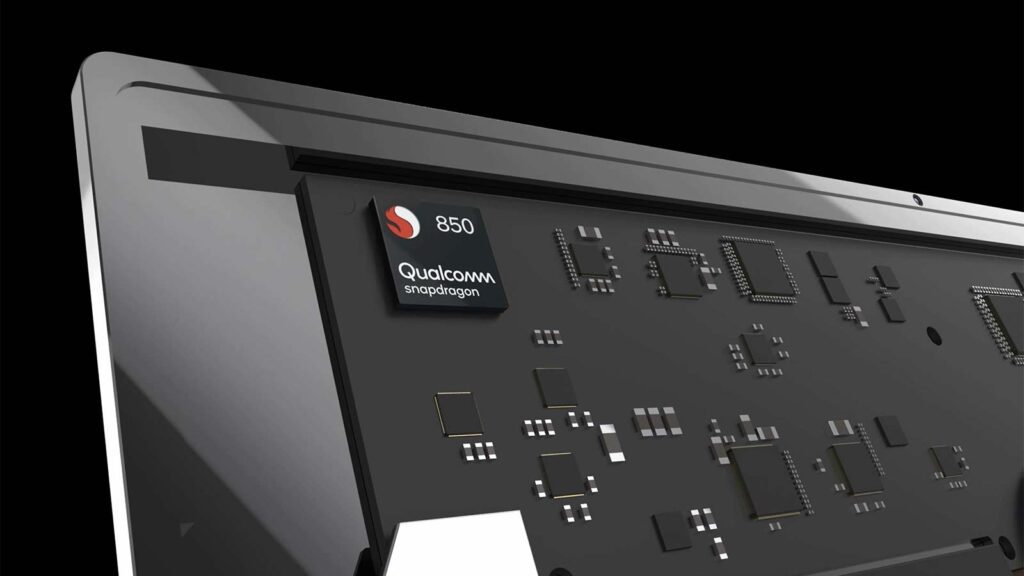In the first quarter of 2018, new Windows 10 laptop devices featuring the Qualcomm Snapdragon 835 hit the market. While the appeal of having smartphone-esque processors powering these machines came with some excellent features (fantastic battery life and always-on LTE, for instance), the overall performance of these laptops was a bit underwhelming given that the 835 is a mid-2017 processor that’s a bit out-of-date.
At Computex 2018, however, Qualcomm made some noise by rolling out the Snapdragon 850, which the company says is a chip that has been specially designed for laptop use rather than the more common mobile devices (phones, tablets) of the past. That’s not to say that the 850 isn’t heavily inspired by its mobile sibling the 845, however, as it boasts the same Kryo 385 CPU, Adreno 630 GPU and X20 LTE modem as its immediate predecessor. With a clock speed of 2.95 GHz, the Snapdragon 850 gets a modest boost of nearly 30 percent over the 845, and Qualcomm also says the chip boasts 20 percent more battery life as well, with some speculating that the real-world performance could lead to as much as 18 hours of life on a single charge on stock batteries.
Putting these chips in laptops comes with a unique advantage. Due to the superior cooling options and larger chassis in these devices, it’s far less likely that these chips will suffer from thermal throttling than they would in a smartphone body. The always-on technology will also allow Windows 10 machines powered by these chips to both play and capture videos in 4K and make use of HDR technology.
As far as operating system issues are concerned, the latest Windows 10 update has optimizations that seem like they were designed to specifically help the Snapdragon 850, such as support for 64-bit ARM processors in Edge.
With the innovation curve beginning to flatten out for processors based on x86 architecture, manufacturers are starting to look to other alternatives to move the industry forward. Apple has been featuring Macbooks with ARM-based processing in them for some time, and recent reports suggest that they could begin moving their desktop line to proprietary, in-house ARM processors as early as 2020. The technology is quickly growing beyond the “mobile only” market and companies like Qualcomm are looking to get on that bandwagon and get their chips into devices as well.
It’s not all good news for Qualcomm, though. While the Snapdragon 850 looks like a promising chip, the bottleneck doesn’t have anything to with silicon but instead with laptop manufacturers being slow to implement designs featuring the new processors. There’s always hesitation on the part of manufacturers when it comes to new chips (just ask AMD about first-generation Ryzen), and given the lag between the announcement of the Snapdragon 835 and machines that actually had the chip inside, it will likely be Spring 2019 before we start seeing Windows 10 laptops with the 850 inside.
That said, the 850 is the first significant chip that looks to give consumers a viable alternative to other x86-based processors.




